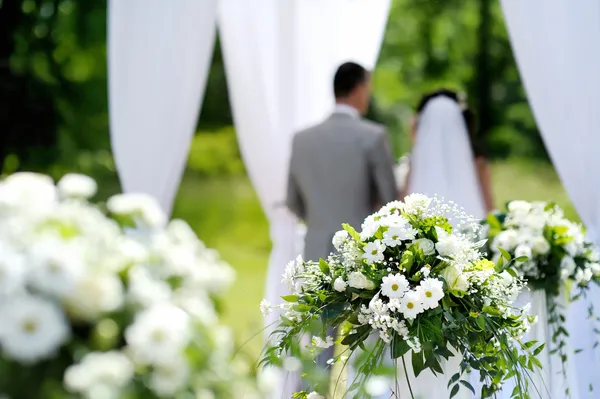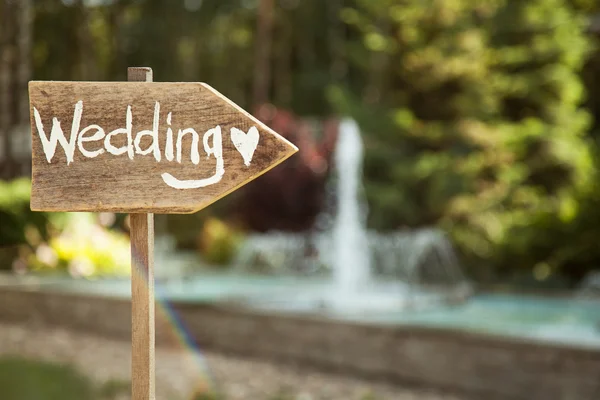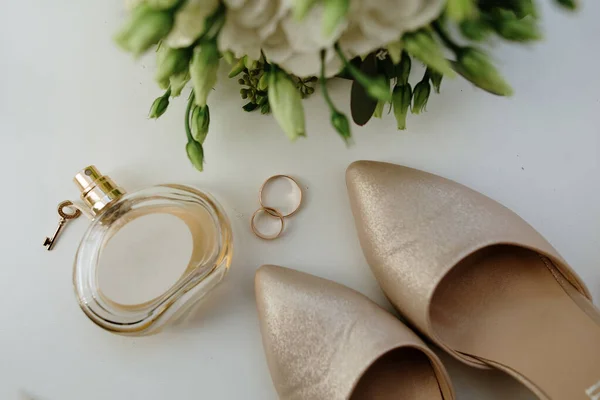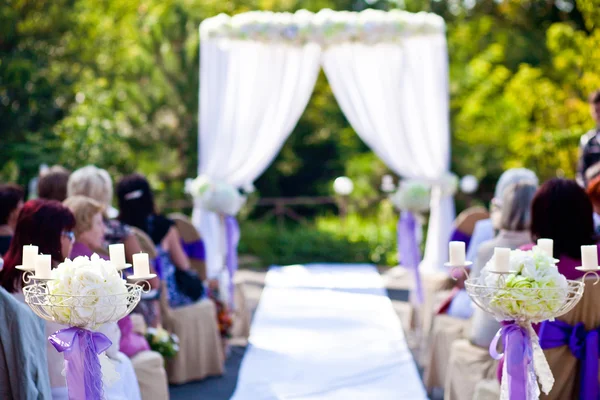We all dream of the perfect wedding day, where the ceremony symbolizes the love and unity between two people about to start their lives together as a family.
Weddings are emotional events for everyone involved. From the moment the bride walks down the aisle to exchanging vows and rings, these moments become cherished memories for all.
However, organizing a wedding can be daunting, with so many details to consider, from seating arrangements to the timing of entrances.
That’s where the wedding ceremony processional comes in. It’s a tradition that’s been around for a long time, shaped by cultural, religious, and social influences.
In this article, we’ll explore what the wedding ceremony processional is about and why it’s such an essential part of weddings. So, keep reading to learn more about this fascinating tradition!

Key Takeaway
- The wedding ceremony processional marks the beginning of the ceremony, representing the coming together of two families and allowing couples to express their uniqueness and journey.
- Traditional wedding processional roles include the bride, groom, maid of honor, best man, bridesmaids, groomsmen, flower girl, and ring bearer, each with specific responsibilities and significance.
- The wedding processional order can vary depending on cultural and religious traditions, such as the differences between Christian and Jewish weddings.
- Couples can personalize their wedding processional by incorporating unique elements, such as special music, mixed-gender bridal parties, or themed processions, to reflect their personalities, preferences, and shared passions.
Understanding the Wedding Processional
The wedding processional is when people walk down the aisle at the beginning of the ceremony. Usually, the closest family members and relatives of the bride and groom follow a specific order.
Although different cultures and traditions may vary, the idea is similar across the board. But why does this order matter?
Firstly, it marks the start of the ceremony and shows the shift from being single to married. It also represents the coming together of two families to create a new one.
Most importantly, the wedding processional order lets couples express their uniqueness and journey together. They can personalize it with music, readings, or by involving loved ones, highlighting what’s important to them.
So, if you’re planning your wedding, understanding this order can help you create a meaningful ceremony that reflects your story.
Traditional vs. Modern Approaches

Wedding processional orders have been known for centuries, even in paganism and early Christianity.
The bridesmaids and groomsmen symbolized the couple’s unity and helped them prepare for the wedding.
According to old wedding traditions, evil spirits were believed to attack the couple who wanted to get married, so bridesmaids would dress like the bride to confuse the dark forces and hide her from view.
Escorting the newlyweds symbolized the community or tribe’s support and solidarity for the couple.
The wedding flowers also had symbolic meaning. During the ceremony, they symbolized fertility, happiness, and success.
During the era of arranged marriages, fathers traditionally escorted their daughters to the wedding venue and walked them down the aisle to meet their future husbands.
So, a significant order and many details followed the wedding party and ceremony.
Thanks to these rituals, we have a wedding processional order today, though modern individuals can choose their own.
Wedding Processional in Christian Tradition: Roles & Elements

When it comes to the order of wedding processional in Christian weddings, the bride’s mother usually walks down the aisle, and her entrance signals the start of the ceremony. She can walk solo or with a son, a nephew, or other family member.
Next in the ceremony is the officiant’s walk. The officiant is the person who conducts the wedding ceremony and oversees the vows and ring exchange. After his walk, he will stand at the altar while the rest of the processional approaches.
The groom’s walk is next.
The groom enters from the side of the ceremony space, close to the right side of the altar. It is near the front row, where the groom’s parents and family are seated. The best man then approaches the same way as the groom. He can walk alone from the side the groom came from or down the aisle. If necessary, the best man can have a bride’s ring to give to the groom.
Some grooms choose to have groomsmen walk down the aisle individually. Before the maid of honor enters, bridesmaids also walk down the aisle one by one.
Before the ceremony begins, the maid of honor helps the bride with everything about her looks. The bride is not yet visible to the guests, and she usually waits in the room or a designated area of the ceremony venue.
The bride prepares her outfit, dress, and veil, and the maid of honor helps her. Then, the maid of honor walks down the aisle and stands by the bride’s side at the altar, holding her bouquet.
The flower girls and the ring bearers are the final roles before the bride’s walk. The ring bearer carries wedding rings tied to a small pillow, usually given to the best man. The flower girl carries a basket with flower petals and scatters them as she walks down the aisle. Both of them can sit or stand next to the bridal party.
The last part of the wedding processional order is the bride’s walk, which her father typically escorts.
He usually stands on the right side, leading the bride to the aisle. Upon reaching the aisle, the father lifts the veil and hugs the bride, after which he sits next to the bride’s mother. The bride’s mother and father sit on the front row, on the bride’s side of the aisle.
What about elements and roles, though?
In every wedding, each member of the wedding party has a unique and important role to play in the ceremony.
The bride and groom are the stars of the show. They exchange vows and rings and coordinate with vendors and wedding planners to ensure everything is right. But with all that responsibility, the couple can feel stressed. That’s when their closest friends and family come in to offer support and help with all the details.
Moving on, no wedding party is complete without a maid/matron of honor and a best man. These two are usually the bride’s and groom’s best friends or closest relatives. The maid of honor assists the bride with planning the wedding, attending dress fittings, and providing emotional support. On the big day, she helps the bride prepare and may even give a toast.
The best man is the groom’s right-hand man. He helps plan and arrange the bachelor party and provides emotional support on the wedding day. He also holds the rings until the exchange.
These two are considered the most important wedding party members after the bride and groom.
Bridesmaids and groomsmen are also important members of the wedding party. They are close friends and relatives who help the couple through the wedding process and walk down the aisle during the ceremony. The bridesmaids help the bride with shopping, bachelorette parties, and bridal showers, while the groomsmen do the same for the groom and plan the bachelor party.
Finally, we have the flower girl and ring bearer. These are usually the children , who play a symbolic role in the wedding ceremony, adding a joyous element to the day. The flower girl scatters petals along the aisle while the ring bearer carries the rings on a decorative pillow to the best man. Usually, an older family member of the wedding party escorts the children.
Planning a wedding can be stressful, but you and your partner can get creative and personalize your special day to reflect your unique personal style and preferences.
You can let your wedding party express their personalities by choosing their garments within a specific color palette or style to add a festive touch and make everyone feel comfortable and confident.
You can also give them a thoughtful present or assign them unique roles and responsibilities during the ceremony and reception. If you have a friend who is a great reader or a cousin who is an amazing dancer, you can incorporate their talents into your big day!
Keeping in touch with your bridal party throughout the process is super important. Trust us, it’ll help foster a sense of teamwork among your crew.
One great way to do this is by planning group activities, outings, or bonding experiences. Not only will it be fun, but it’ll also help ensure that everyone is on the same page and working together towards your big day.
Remember that each of your bridal party members is unique, so try to be mindful of their preferences and boundaries. And if any conflicts arise during the planning process (which, let’s be real, is always a possibility), try to address them diplomatically and quickly.
The Jewish Wedding Processional Order
Here’s one interesting fact about wedding processionals in different traditions.
Although they share similar elements, the wedding processional order in Jewish tradition differs from Christian weddings.
The rabbi enters first, followed by the bride’s grandparents, who usually sit in the first row on the right side. Then, the groom’s grandparents enter, and they are typically seated on the left side’s first row. After them, there are the groomsmen, who walk in pairs, followed by the best man.
The groom enters next, escorted by his parents: his father is on the right and his mother on the left side.
Bridesmaids walk in line, starting with the one who will stand furthest from the bride. Following them is the maid or matron of honor; after them are the ring bearer and flower person.
Finally, the bride walks in, accompanied by her parents, with her father on the right and mother on the left side. The couple, rabbi, and parents of both partners usually stand under the chuppah, a traditional Jewish wedding canopy.
Generally, wedding guests arrive and are seated before the processional starts. Wedding planners or ushers usually guide them to their seats.
Nowadays, many modern trends have emerged in weddings. Some couples choose to have a different order for their wedding processional to add a touch of flexibility or style. They can also opt for non-linear entrances with unconventional seating arrangements.
With the help of a wedding planner, couples can craft their processional order. By understanding the couple’s vision, the planners can provide guidance and suggestions to perfect the processional order.
Creating Your Unique Wedding Processional

If you have attended wedding parties lately, you may have noticed that every couple wants to make their special day unique by incorporating elements representing their love story and memories.
To achieve this, several tips can help you plan a wedding that reflects your personality.
When choosing music, going for something that speaks to you and your loved ones is always great.
Whether it’s a song that brings back some amazing memories or something you all enjoy, picking tunes that resonate with your experiences and interests is always a great idea. So, take your time and choose music special to you, your partner, your friends, and your whole crew.
Pro tip: Do a quick acoustics check at the venue before the event to ensure the music sounds just right. This will give everyone attending a great auditory experience!
Moreover, think about the aisle length and width, which can affect the pace and timing of the procession. Knowing the seating arrangement is important, as it can affect how the bridal party enters and exits the space. The design and layout of the altar can also impact the bridal party’s and officiant’s positioning during the ceremony.
Don’t forget about accessibility and decorative elements during the ceremony.
Also, check the timing of the ceremony and the availability of dressing rooms or holding areas for the bridal party. Consider all the restrictions or guidelines imposed by the ceremony venue. Incorporating your preferences and creativity can make your wedding processionals unique and personal.
To highlight the importance of your family members, you could have both sets of parents, grandparents, and other family members walk down the aisle together. For some who have modern attitudes towards gender equality, a mixed-gender bridal party instead of a traditional one is the perfect choice.
You could even include your furry friend in your wedding procession and have him or her walk down the aisle with you and your partner if you consider it a family member!
If you’re going for that “extra” effect, you could have an “inclusive” processional and invite all your wedding guests to participate, or choose a themed processional that reflects your interests, hobbies, or shared passions.
Some also add cultural elements that reflect their heritage and tradition, such as traditional attire, costumes, or music!
Apart from paying attention to music and those little details that make the wedding unique, designing the processional order for your wedding ceremony is an excellent opportunity for you and your partner to create a memorable start to your special day.
You can personalize your processional order by incorporating your preferences and assigning roles to your closest friends. Choose a themed processional from various options that reflect your personality.
Consider adding your favorite music or incorporating details special to you and your partner, which your closest friends know; it will add fun and romance to your ceremony.
And before the wedding day, arrange a wedding processional rehearsal to ensure everything runs smoothly. Make sure your friends are aware of their roles in the ceremony.
Provide the participants with precise information about the event’s timing and sequence. Pay attention to the spacing and timing and practice entries and exits.
Arrive early at the venue on the ceremony day and finalize any last-minute details with your bridal party. It will help ensure that everything runs smoothly and you can enjoy your special day without any stress or worries.
Anothr pro tip: It’s always a good idea to have a backup plan and backup roles in case of unexpected changes or delays. Consider hiring a close friend or relative to assist you with any last-minute issues!
Enjoy the Ceremony
Organizing everything for your wedding is essential, but it can be quite stressful. There are many details to consider and protocols to complete. Among so many things to do, remember to enjoy the ceremony too!
After your grand entrance, indulge the emotions and conversations with your loved ones, and capture memories through photos and videos. Use your wedding day to summarize your love journey and celebrate another milestone you reached as a couple!
Let the moments of love and happiness shared on this special day remind you of your promises to one another. Create lasting memories, and cherish every moment from your wedding day, from your entrance to the exchange of the rings!
Conclusion
The wedding processional order is a crucial aspect of your wedding day. It blends tradition and romance as you follow all the protocols with your unique style.
It also reflects on your unforgettable moments.
The wedding processional order represents the love between two people but also symbolizes the sense of community that comes with it. Each member of your family and close friends has a significant role to play, making it the perfect opportunity to share beautiful and happy moments with the people you love.
By dividing their roles, you can create an ideal combination of tradition, emotions, and memories that will last a lifetime. So, go ahead and plan your dream wedding with your partner, and involve your loved ones to make it even more special!